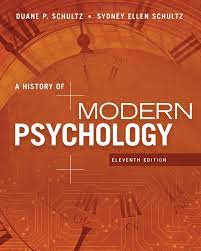Test Bank For Personality Psychology Domains of Knowledge About Human Nature 6th Edition by Randy Larsen
Original price was: $55.00.$27.00Current price is: $27.00.
Test Bank for Personality Psychology Domains of Knowledge about Human Nature 6th Edition by Randy Larsen provides students with a comprehensive guide to the material covered in the course. The Test Bank includes questions on all topics covered in the textbook, as well as essay questions and multiple-choice questions.
In addition, the Test Bank includes a glossary of key terms, making it an invaluable resource for students preparing for exams. Test Bank for Personality Psychology Domains of Knowledge about Human Nature 6th Edition by Randy Larsen is an essential tool for any student taking the course. It provides a thorough review of all the material covered in the course and will help students prepare for their exams.
Digital item No Waiting Time Instant Download
ISBN10: 1259870499 ISBN13: 9781259870491
Description
Test Bank For Personality Psychology Domains of Knowledge About Human Nature 6th Edition by Randy Larsen
Chapter 03
Traits and Trait Taxonomies
Multiple Choice Questions
1. Most personality psychologists hypothesize that traits:
A. are perhaps enduring over time.
B. are reasonably unstable over time.
C. are inconsistent over situations.
D. are similar in all people.
Accessibility: Keyboard Navigation
2. Which of the following is NOT a fundamental question that guides those who study personality traits?
A. How can traits be changed?
B. How should traits be conceptualized?
C. How can the most important traits be identified from among the thousands of ways in which individuals differ?
D. How can a comprehensive taxonomy of traits be developed?
Accessibility: Keyboard Navigation
3. Which of the following statements is true about psychologists who view traits as internal dispositions?
A. They avoid prejudging the cause of an individual’s behavior.
B. They argue that the important individual differences among people must be first identified and described, and subsequently causal theories to explain them must be developed.
C. They define traits simply as descriptive summaries of attributes of persons.
D. They believe that traits can lie dormant in the sense that the capacities remain present even when particular behaviors are not actually expressed.
Accessibility: Keyboard Navigation
4. Which of the following is of the view that a trait is a descriptive summary of the general trend in a person’s behavior?
A. Eysenck’s theory
B. The theoretical approach
C. The act frequency approach
D. The theory of sociosexual orientation
Accessibility: Keyboard Navigation
5. In the context of the act frequency approach, a robin is more _____ of the bird category than a penguin.
A. prototypical
B. aerodynamical
C. orthodontic
D. elemental
Accessibility: Keyboard Navigation
6. Which of the following is NOT a key element of the act frequency approach?
A. Act nomination
B. Assessing synonym frequency
C. Recording of act performance
D. Prototypicality judgment
Accessibility: Keyboard Navigation
7. Which of the following procedures helps researchers to identify hundreds of acts belonging to various trait categories?
A. Act nomination
B. Act effectiveness
C. Act performance
D. Act likelihood
Accessibility: Keyboard Navigation
8. Robert conducts research to study the trait of empathy using the act frequency approach. Each participant is asked to list the specific acts or behaviors that they are most likely to associate with highly empathetic people. Robert collects a pool of 251 empathetic acts. This scenario exemplifies the act _____ procedure of the act frequency approach.
A. nominalization
B. nomenclature
C. nomination
D. nomothetic
Accessibility: Keyboard Navigation
9. In the context of the act frequency approach, which of the following involves identifying the acts that are most central to each trait category?
A. Act nomination
B. Synonym frequency
C. Cross-cultural universality
D. Prototypicality judgment
Accessibility: Keyboard Navigation
10. Which of the following is the final step in the act frequency approach?
A. To identify the acts that are most central to each trait category
B. To secure information on the actual performance of individuals in their daily lives
C. To identify which acts belong in which trait categories
D. To secure information on the importance of different traits in social communication
Accessibility: Keyboard Navigation
11. If the act “she made direct eye contact and smiled” is central to the category of flirting, it would be considered a(n) _____ act for that category of behavior.
A. effective
B. likely
C. prototypical
D. centrifugal
Accessibility: Keyboard Navigation
12. Which of the following is a criticism of the act frequency approach?
A. It is of little help in making explicit the behavioral phenomena to which most trait terms refer.
B. It is not able to explore the meaning of important traits that have proven difficult to study.
C. It does not specify how much context should be included in the description of a trait-relevant act.
D. It fails to identify cultural similarities and differences in the behavioral manifestation of traits.
Accessibility: Keyboard Navigation
13. The approach that uses the natural language as its logical starting point is the _____ approach.
A. lexical
B. theoretical
C. statistical
D. act frequency
Accessibility: Keyboard Navigation
14. Which of the following states that all important individual differences have become encoded within the natural language?
A. The lexical hypothesis
B. The projective hypothesis
C. Factor analysis
D. A personality taxonomy
Accessibility: Keyboard Navigation
15. Which of the following statements is true of the lexical approach?
A. The importance of a trait term is independent of the number of its synonyms found within any one language.
B. All traits listed and defined in the dictionary form the basis of describing differences among people.
C. Personality-descriptive nouns are extraordinarily important in social communication.
D. The trait terms that exist in only one or a few languages serve as a potential candidate for a universal taxonomy of personality traits.
Accessibility: Keyboard Navigation
16. According to the lexical approach, if a trait term exists in only one or a few languages, then it may be _____.
A. imported by other languages
B. important to a universal personality taxonomy
C. of only local relevance
D. known only to personality psychologists
Accessibility: Keyboard Navigation
17. Which of the following will help identify important personality traits in the lexical approach?
A. Finding the number of synonyms for a trait in the corresponding lexicon
B. Determining if a trait is conveyed through different parts of speech, including adjectives, nouns, and adverbs
C. Examining the corresponding lexicon for biological words that represent a trait
D. Determining if there are words representing each end of a trait in the natural language
Accessibility: Keyboard Navigation
18. Which of the following indicates that the more important is an individual difference in human transactions, the more languages will have a term for it?
A. Cross-cultural universality
B. Intellect-openness
C. Synonym frequency
D. Act frequency formulation
Accessibility: Keyboard Navigation
19. Which of the following concepts indicates that if an attribute has not merely one or two trait adjectives to describe it but rather many words, then it is a more important dimension of individual difference?
A. Adjacency
B. Synonym frequency
C. Cross-cultural universality
D. Orthogonality
Accessibility: Keyboard Navigation
20. Which of the following approaches yields the criteria of synonym frequency and cross-cultural universality for identifying important personality traits?
A. The lexical approach
B. The theoretical approach
C. The statistical approach
D. The act frequency approach





Be the first to review “Test Bank For Personality Psychology Domains of Knowledge About Human Nature 6th Edition by Randy Larsen”